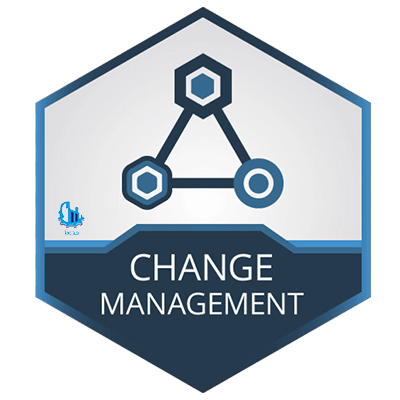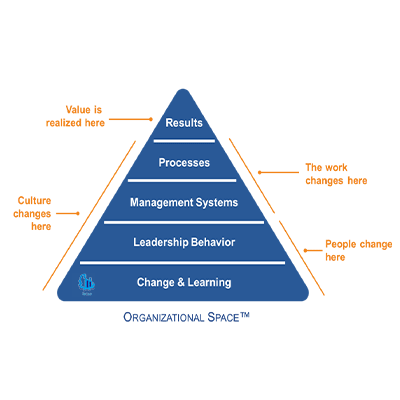change management
Introduction
Considering the dynamics of internal and external organizational factors, change is an unavoidable action and change management should be considered as the most fundamental principle in the management of organizations.
Nevertheless, the durability of organizations and the unwillingness of managers and employees to change the current procedures and policies have caused the structural stagnation and lack of success of many organizations.
The manager must be confident. that if it spends time, energy and resources of the organization to create a change. It will achieve the expected outputs and results. And the conditions that are created as a result of change. It has the necessary stability and stability.
Therefore, managers and agents of change are facing a kind of paradox. On the one hand, they should try to create some kind of sustainability in the organization. which guarantees the stability of changes in the organization. And on the other hand, it should be with the permanence in the organization, which is the result of commitment to the current conditions. confront and break it.
What is organizational change?
Organizational change occurs when a business undergoes a major change that affects most or all of its employees. This type of change is broad because it affects the company’s culture, infrastructure, technologies or internal processes. In other words, organizational changes change the day-to-day experience of your team. Sometimes these big transitions are carefully planned and sometimes they happen without notice.
Here are some examples of organizational changes:
1. A change in leadership, such as a new CEO or department head.
2. Merger or acquisition of companies.
3. Business restructuring.
4. Introducing new technologies, such as switching from email to project management software.
5. Update your company’s goals as you grow, such as increasing sales.
Organizational change occurs when businesses go through a major transition that affects corporate culture, infrastructure, technologies, or internal processes. Many employees feel the effects of organizational change—whether that change involves new leadership, the introduction of new tools, or an update to your company’s goals. Learn about different types of organizational change and how big transitions can affect your team—plus some key strategies for managing change when it happens.
What is change management?
Management of Change (MOC) is a policy that companies use to manage any strategic, structural, process changes, or health, safety, or environmental risks that arise when facilities, employees, or operations are updated, added, or changed.
What is effective organizational change management?
Most organizations today are in a constant state of flux as they respond to the rapidly changing environment of foreign business, local and global economies, and technological advancements. This means that workplace processes, systems and strategies must constantly change and evolve for an organization to remain competitive.
Change affects your most important asset, your people. Losing employees is costly due to the associated recruitment costs and the time it takes to update new employees. Every time an employee walks out the door, a piece of knowledge from your business goes with them.
Six steps to effectively manage organizational change
A change management program can ensure that your employees are guided through the changes. The hard reality is that approximately 70% of change initiatives fail due to negative employee attitudes and unproductive management behaviors. Hiring the services of a professional change management consultant can ensure that you are among the winning 30%. In the following, we will examine the 6 general stages of change management in organizations.

1. Clearly define the change and align it with business goals
It may seem obvious, but many organizations fail to take this critical initial step. It’s one thing to articulate the change that’s needed, and another to conduct a critical review against organizational goals and performance objectives to ensure that the change is moving your business in the right direction strategically, financially, and ethically. This step can also help you determine the value of the change, which determines the effort and inputs you need to invest.
Key questions:
-
What should we change?
-
Why is this change necessary?
2. Determine the influences and those affected
Once you know exactly what you want to achieve and why, you need to determine the impact of the changes at different levels of the organization. Check the impact on each business unit and how it is transferred to people through the organizational structure. This information begins to form a plan where education and support are needed to further mitigate the effects.
Key questions:
-
What are the effects of the change?
-
Who will be most affected by this change?
-
How will the change be received?
3. Create a communication strategy
Although all employees should participate in the change process, the first two steps identify the employees to whom you should communicate the changes. Determine the most effective means of communication for the group or individual accompanying them. The communication strategy should include a timeline for how the changes will be phased in, key messages, and the communication channels and media you plan to use.
Key questions:
-
How will the change be communicated?
-
How will feedback be managed?
4. Provide effective training
By getting the message of change out in the open, it’s important that your people know that they will receive training, structured or informal, to acquire the skills and knowledge needed to be effective while implementing the change. Training can consist of a series of online micro-learning modules, or a blended learning approach involving face-to-face training sessions or on-the-job coaching and mentoring.
Key questions:
-
What behaviors and skills are required to achieve business results?
-
Which teaching methods will be more effective?
5. Implement a support structure
Providing a support structure to help employees emotionally and practically adapt to change and master the behaviors and technical skills needed to achieve desired business results is essential. Some changes can lead to layoffs or restructuring, so you may want to consider offering support, such as counseling services, to help people navigate the situation. To help employees adjust to changes in how a role is performed, an open-door policy or guidance can be established with management to ask questions as they arise.
Key questions:
-
Where is more support needed?
-
What kind of support would be most effective?
6. Measure the change process
During the change management process, a structure should be created to measure the business impact of the changes and ensure that there are continuous reinforcement opportunities to build skills. You should also evaluate your change management program to determine its effectiveness and document any lessons learned.
Key questions:
-
Did the change help achieve business goals?
-
Was the change management process successful?
-
What could have been done differently?

Benefits of change management
When an organization implements a MOC, it enjoys many benefits. First and foremost, MOC helps a business minimize unexpected adverse situations related to security, reliability, stability, or integrity that may occur with process or equipment changes. Since change almost always affects production and efficiency, at least temporarily, having a clear MOC can help the team offset this cost by ensuring that the change is fully reviewed, inspected, and tested before implementation. minimize It also helps set expectations and creates the necessary checks and balances between technical staff and management.
Organizational change versus organizational change management
The terms organizational change and organizational change management often go hand in hand. That’s because whenever big transitions happen, it’s important to plan how to mentor employees to make sure everyone is prepared to succeed in the new environment. This is what organizational change management is all about – preparing for and managing any new organizational change. On the other hand, organizational change itself only describes the transition—not the process you’ve created to manage change. This means that whenever you anticipate or experience organizational change, you should also prepare your change management process to plan how you will deal with the transitions step by step.
Change factors
Organizational change does not happen without introduction. Drivers of change usually originate from the organizational environment or the market. These triggers include things like bold moves by competitors, new technology, or changes in government regulations. Also, the inefficiency of the manager can be a stimulus for change in the organization.
There are forces and stimuli in the environment that increase the need for change. These stimuli include external and internal stimuli. include the environment, market requirements for business, organizational requirements, cultural requirements, the nature of the workforce, technology, economic shocks, competition, social trends, global policies, the behavior of employees and managers, the mental format of the leader and employees.
change
Change in organizations means that the organization’s activities change from the current situation to a different situation. Change happens in five areas of the organization’s activity. Organizational culture, strategy, structure, distribution of power, supervisory systems.
The importance of these five areas is so much that the survival of the organization is not possible without them. All the activities of the organization happen within these five areas. Although the activity of each of these areas is special. But at the same time they depend on each other. So that inconsistent and inappropriate activities within each of these areas lead to low performance or failure.

change management
Change management is very important in the organization. Clause 3-6 of the ISO 9001 standard, 2015 edition, is also related to planning changes as follows.
6-3- Designing changes
When the organization determines the need for changes in the management system. Changes should be done in a planned way (refer to paragraph 4-4)
The organization should consider (the following):
a) The purpose of the changes and their possible consequences;
b) integration of the management system;
c) availability of resources;
Considering that the occurrence of change in the organization has a high risk. If change and risk management is not done correctly, the organization will face many problems and consequences. In order to deal with the problems and negative consequences of the changes, the organization must comprehensively identify the risks caused by the changes. After evaluating them, according to the priority of existing risks, take appropriate reactive measures.
In the era of global competition, technological innovations, developments, discontinuities, and even anarchies, change is necessary. And instead of resisting it, we should support and use change programs, which is possible in the shadow of a strong management.
Managers and professional brokers anticipate change and resistance to change. And they take timely steps to minimize its adverse results.
If you need training or advice in the field of change management, please call 021-88761795.



No views